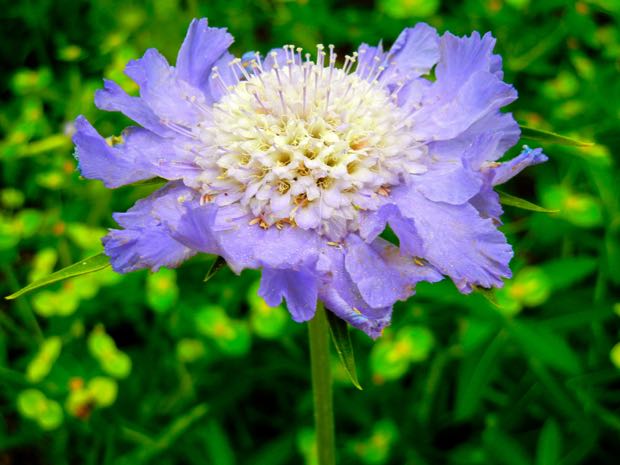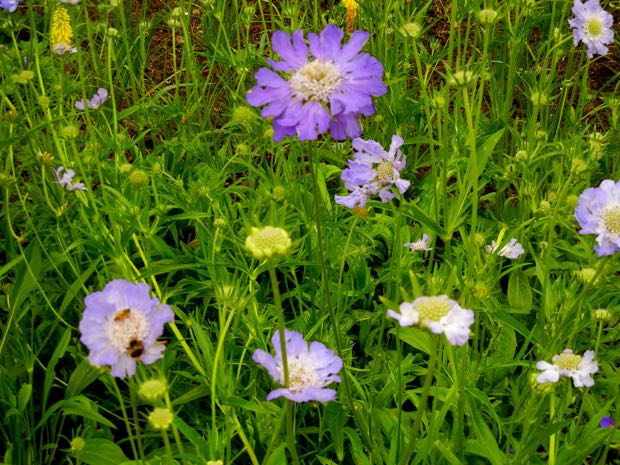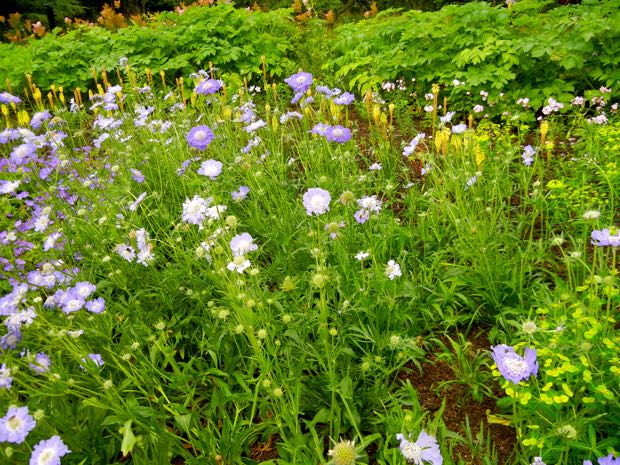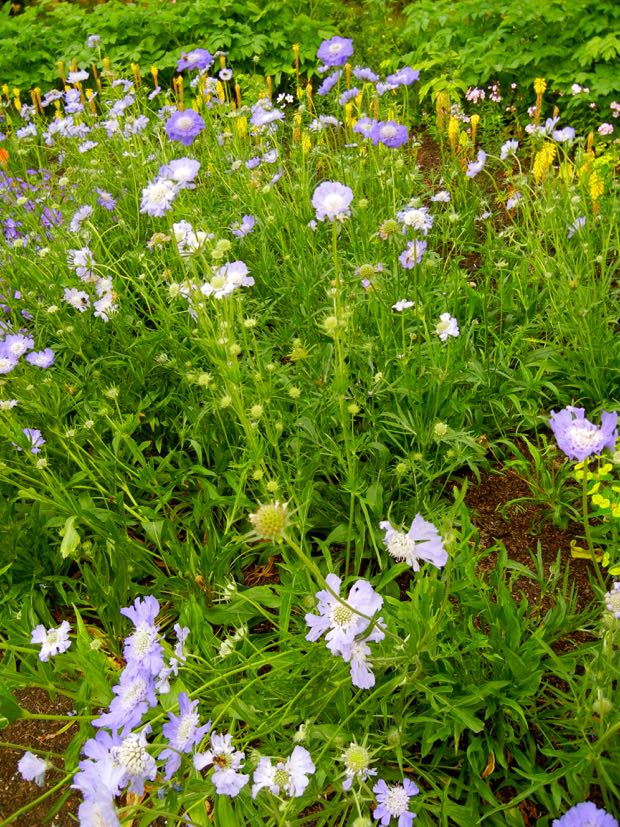Scabiosa caucasica: Captivating Blooms of the Pincushion Flower
Scabiosa caucasica, commonly known as Caucasian Scabiosa or Pincushion Flower, is a charming clump-forming perennial that adds beauty to gardens. Originating from the Caucasus Mountains, Iran, and Armenia, this plant belongs to the Caprifoliaceae family of plants. It is highly valued for its striking blooms, which emerge from late summer to early fall, creating a captivating display of color in the garden.
The flowers of Scabiosa caucasica are a highlight, featuring enchanting shades ranging from lavender to blue, with occasional variations of white. Each flower possesses frilly outer petals that surround a distinctive central cushion. The cushion is formed by protruding stamens, resembling pins inserted into a pincushion. This unique characteristic has earned the plant its popular name, Pincushion Flower. The flowers are typically 2-3 inches in diameter and bloom singularly on sturdy, upright stems.
In terms of growth habits, Scabiosa caucasica reaches a moderate height of 18-24 inches, making it suitable for various garden settings. The plant’s foliage complements the blooms beautifully, with grayish-green leaves that enhance the overall aesthetic appeal. The basal leaves are lance-shaped, while the stem leaves are narrow and either entire or pinnately-lobed, adding texture and interest to the plant’s appearance.
Scabiosa caucasica is a wonderful addition to flower beds, borders, and cottage-style gardens, where its delightful blooms and attractive foliage can be admired. The plant’s longevity as a perennial ensures that it will grace the garden year after year, bringing joy to both gardeners and pollinators alike.
Cultivation and Care Scabiosa caucasica:
Light Preference and Soil Requirements: Scabiosa caucasica thrives in light, well-drained soils with a neutral pH. It prefers full sun exposure but can tolerate partial shade. Good drainage is crucial for the plant’s growth, as it is intolerant of wet or poorly drained soils, especially during winter. Applying a light, dry mulch like hay/straw or evergreen boughs in winter can provide protection. Additionally, it is not well-suited to high heat and humidity conditions.
Watering: Regular watering is necessary for Scabiosa caucasica, particularly during the hot summer months. The soil should be kept moist but not waterlogged to prevent root rot.
Fertilizer: Scabiosa caucasica generally does not require frequent fertilization. A light application of fertilizer in the spring can help promote flowering.
Deadheading: Removing spent flowers through deadheading encourages the plant to produce more blooms, prolonging the flowering period.
Pests and Diseases: Scabiosa caucasica may be susceptible to pests such as aphids and spider mites, as well as diseases like powdery mildew. Promptly address any signs of pests or diseases to keep the plant healthy.
Winter Protection: In regions with cold winters, providing protection for Scabiosa caucasica is essential. This can be achieved by covering the plant with a burlap sack or other protective material.
Dividing the Plant:
Every 3 to 4 years, dividing the plant is recommended to maintain its health and vigor. To divide the plant, carefully dig it up and use a sharp knife or spade to separate it into several smaller sections, ensuring each section has a few roots. Replant the divisions in a sunny location with well-drained soil.
Pruning the Plant: In spring, pruning the plant back encourages new growth. Remove any dead or damaged branches to maintain its overall health and appearance.







